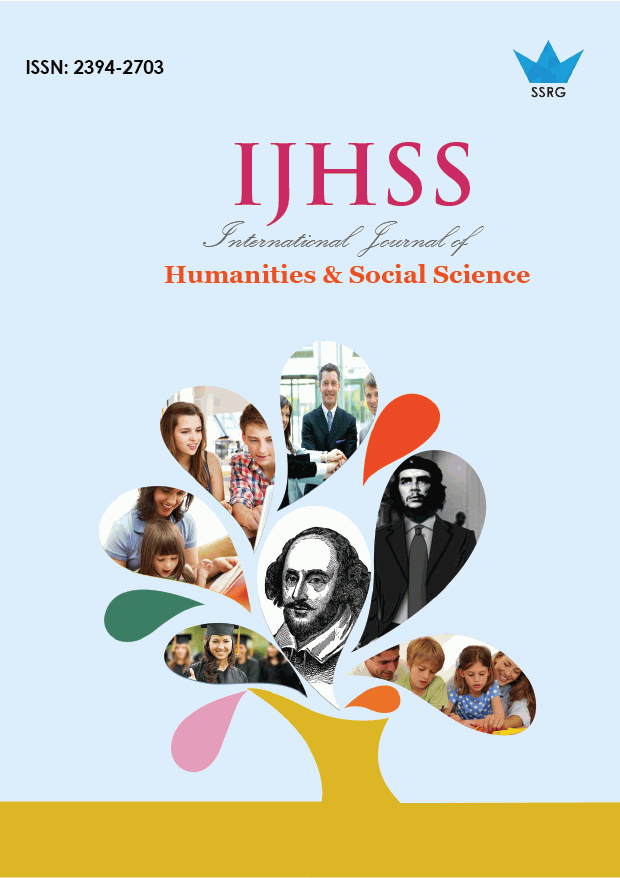Hope in Fencing: How Goals Shape Mindset, Motivation, and Performance Among Male Fencers

| International Journal of Humanities and Social Science |
| © 2025 by SSRG - IJHSS Journal |
| Volume 12 Issue 4 |
| Year of Publication : 2025 |
| Authors : Ativ Mathur, Rubani K. Narang |
How to Cite?
Ativ Mathur, Rubani K. Narang, "Hope in Fencing: How Goals Shape Mindset, Motivation, and Performance Among Male Fencers," SSRG International Journal of Humanities and Social Science, vol. 12, no. 4, pp. 59-69, 2025. Crossref, https://doi.org/10.14445/23942703/IJHSS-V12I4P106
Abstract:
Hope is a key factor in sports psychology, influencing motivation, goal achievement, and resilience. While hope has been studied in various sports, its role in Fencing—a sport requiring rapid decision-making and psychological endurance— remains unexplored. This study examines how hope and nonspecific goal-setting impact fencers’ performance. This qualitative study conducted semi-structured interviews with seven male fencers (aged 15–17 years) from California. The study uses thematic analysis to identify the common patterns related to hope, goal-setting, and psychological strategies in competition. Hope emerges as a key motivator, helping fencers maintain confidence, reframe setbacks, and balance emotional regulation. The major themes include hope as a driving force in performance; the psychological battle beyond the physical effort; progress as a journey, not a destination; resilience in the face of defeat; the role of community support in perseverance; the balance between confidence and humility; and the power of discipline and strategy. Hope plays a crucial role in fencing and enhancing motivation, strategic adaptability, and resilience. The results have implications for developing hope-based training strategies to improve fencers’ performance and stress management. Future research should explore gender differences and the long-term effects of hope interventions in individual sports.
Keywords:
Achievement, Fencing, Goal, Hope, Motivation, Performance.
References:
[1] C.R. Snyder, “Conceptualizing, Measuring, and Nurturing Hope,” Journal of Counseling & Development, vol. 73, no. 3, pp. 355-360, 1995.
[CrossRef] [Google Scholar] [Publisher Link]
[2] Daniel J. Brown et al., “A Qualitative Exploration of Thriving in Elite Sport,” Journal of Applied Sport Psychology, vol. 30, no. 2, pp. 129-149, 2017.
[CrossRef] [Google Scholar] [Publisher Link]
[3] Christine Porath et al., “Thriving at Work: Toward Its Measurement, Construct Validation, and Theoretical Refinement,” Journal of Organizational Behavior, vol. 33, no. 2, pp. 250-275, 2012.
[CrossRef] [Google Scholar] [Publisher Link]
[4] Lewis A. Curry et al., “Role of Hope in Academic and Sport Achievement,” Journal of Personality and Social Psychology, vol. 73, no. 6, pp. 1257-1267, 1997.
[CrossRef] [Google Scholar] [Publisher Link]
[5] Edwin A. Locke, and Gary P. Latham,, “Building a Practically Useful Theory of Goal Setting and Task Motivation: A 35-Year Odyssey,” American Psychologist, vol. 57, no. 9, pp. 705-717, 2002.
[CrossRef] [Google Scholar] [Publisher Link]
[6] Mihaly Csikszentmihalyi, Flow: The Psychology of Optimal Experience, New York: Harper & Row, 1990.
[Google Scholar] [Publisher Link]
[7] Brett Smith, and Andrew Sparkes, “Men, Sport, and Spinal Cord Injury: An Analysis of Metaphors and Narrative Types,” Disability & Society, vol. 19, no. 6, pp. 613-626, 2005.
[CrossRef] [Google Scholar] [Publisher Link]
[8] Virginia Braun, and Victoria Clarke, “Using Thematic Analysis in Psychology,” Qualitative Research in Psychology, vol. 3, no. 2, pp. 77-101, 2006.
[CrossRef] [Google Scholar] [Publisher Link]

 10.14445/23942703/IJHSS-V12I4P106
10.14445/23942703/IJHSS-V12I4P106